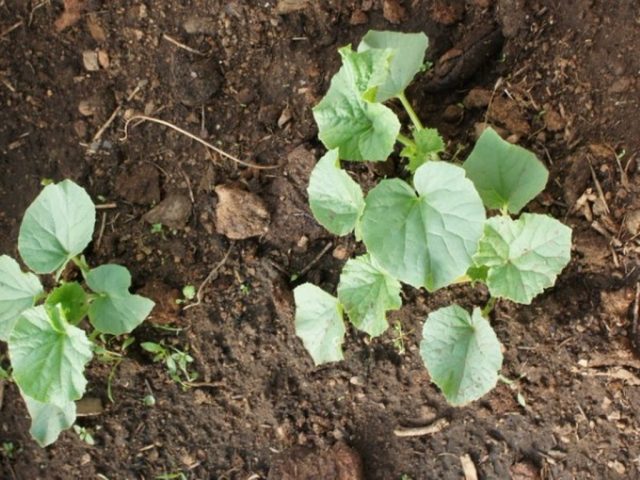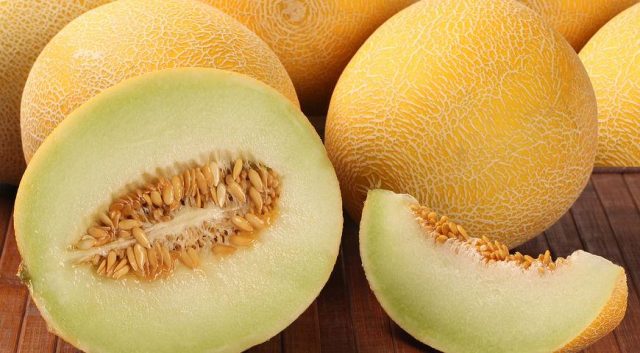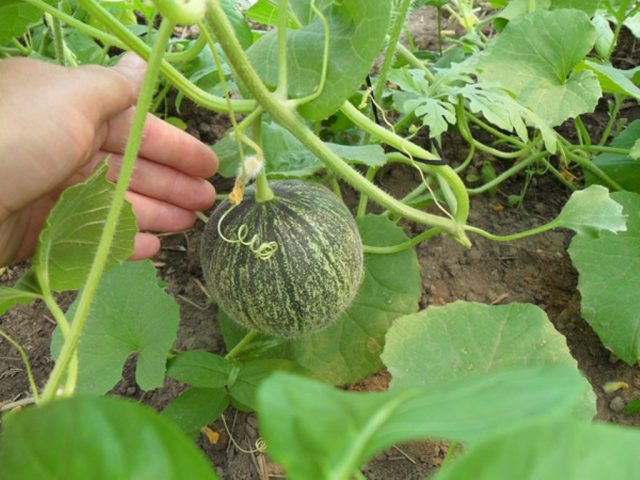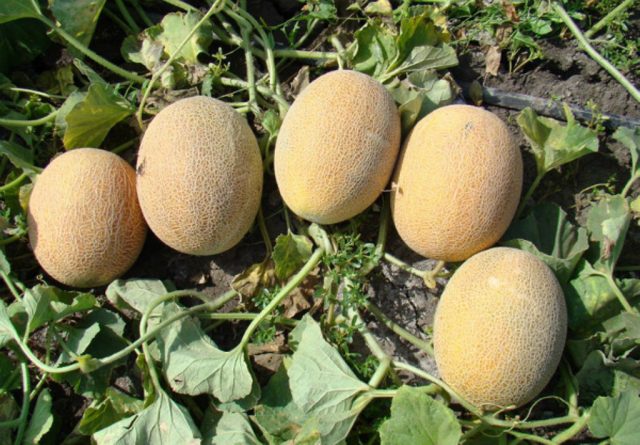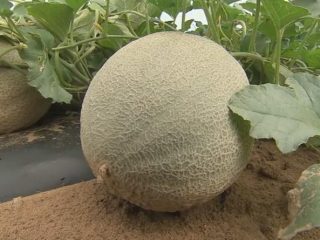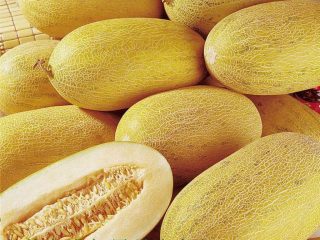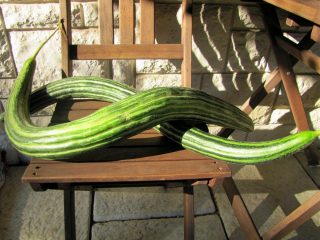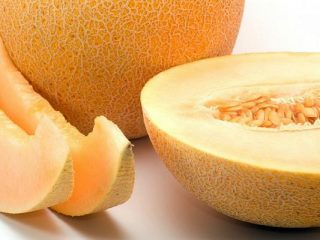Content
Growing melon in open ground was previously available only in regions with warm climates. But, thanks to the work of breeders, the southern fruit has become available for cultivation in Siberia, the Urals, the Moscow region and central Russia. To obtain a generous harvest, you need to select a variety and follow the rules of care and cultivation.
Planting melons in open ground with seeds
In order for the bush to grow and develop well, it is necessary to prepare the soil and seeds.
It is better to purchase high-quality seed material in specialized stores or collect it yourself. When collecting seed, you need to take into account the fact that young seeds bear scant fruit, since as they grow they form a large number of male flowers. Planting material collected 2-3 years ago will bring a rich harvest.
To grow a strong plant, the seeds are soaked before sowing according to a certain scheme:
- Soak for 1 hour in a weak solution of potassium permanganate.
- Next, immerse in warm water.
- Every 4 hours, the seed is ventilated and again immersed in water.
- The total soaking time should be 12 hours.
- The soaked seed material is scattered onto a cloth for germination.
Melon is a light-loving fruit, so it is necessary to allocate a bright area protected from the wind for it. Melon is very picky about the quality of the soil; it should be light, well fertilized, with neutral acidity.
Before growing in open ground, it is necessary to prepare the site in a timely manner:
- In the fall, the soil is dug up using a spade and sand, rotted manure or humus are added.
- With the onset of warm spring days, the area is sprinkled with ash or peat to quickly melt the snow.
- The open bed is covered with film to quickly warm up the soil.
- After the earth has warmed up to + 15 ° C, re-digging is carried out with the addition of potassium-phosphorus fertilizers, strictly observing the dosage indicated on the packaging.
- Before sowing seeds in open ground, the soil is dug up again and nitrogenous fertilizers are added.
Experienced gardeners advise planting seed directly in open ground only in the southern regions. In cities with an unstable climate, it is better to grow melon through seedlings, since after germination, the plant will not have time to bear fruit before the onset of cold weather. Seedlings begin to grow at the end of April.
How to plant a melon
In order for the melon to bear large fruits, it is necessary to follow the planting rules.Crop rotation and unthickened planting are the key to good fruiting.
Planting scheme
Melon is an unpretentious plant; planting seeds in open ground does not take much time and effort. Planting is carried out using a certain technology:
- The prepared bed is shed generously with warm water, since germination will be much higher in moist soil.
- After the moisture is absorbed into the soil, make holes 2-3 cm deep.
- Add ½ tbsp to the bottom of the planting hole. wood ash, 1 tsp. urea and mix well.
- Place 2-3 prepared seeds in one hole. Since the melon bush grows powerful and spreading, the interval between planting holes should not be less than half a meter.
- The seed material is covered with dry soil and compacted.
- To protect plantings from spring frosts, they are covered with film or agrofibre.
Under favorable climatic conditions, seedlings appear in open ground within 10-15 days. After germination, the strongest sprout is left, and the excess ones are carefully removed.
After what crops is it better to plant melon?
The best place for a melon will be an area where onions, corn, cabbage, cucumbers and cereals were previously grown. It is not recommended to plant it in one place for more than 2 years, as this leads to poor fruiting and the occurrence of many diseases.
What can you plant next to melons?
Often, summer residents occupy every free plot of land, planting flowers, vegetables or herbs. Melon is very picky about its neighbors, so it is not recommended to grow it next to cucumbers and potatoes. Potatoes secrete a specific substance that causes the foliage to wilt. Cucumbers and melon are related crops, so during flowering they can cross-pollinate, thereby spoiling the quality of the crop.
It is better to plant corn, herbs, cruciferous crops and legumes next to the melon. Very often, melons are placed next to watermelons. This neighborhood is considered the best, since they have the same growing conditions. But it is necessary to take into account that the bushes form long vines, and for their cultivation you need to allocate a large area.
What can you plant after melon?
After melon, you can perfectly grow such vegetable crops as:
- turnips, radishes;
- carrots, beets;
- garlic, onion;
- potato;
- tomatoes, peppers;
- legumes.
Features of growing melons in the regions
Melon is a heat-loving crop; it needs a lot of light and heat to ripen. It tolerates heat and minor drought well. The maximum humidity for good development should be at least 70%.
Despite the fact that melon is a southern fruit, it can be grown in all corners of Russia. The main thing is to choose a variety, carry out timely care and take into account climatic conditions.
In outskirts of Moscow
Growing a melon in the Moscow region is difficult, but possible. You can get good fruiting only by growing the crop through seedlings. Seed material for seedlings is sown no earlier than mid-April. The strengthened seedlings are transferred to prepared beds in mid-June.
The growing area should be well fertilized with organic matter. The prepared area is covered with thick, black agrofibre or polyethylene. Cross-shaped cuts are made in the covering material, where the mature seedlings are planted.
After planting, the seedlings are covered with spunbond overnight so that they take root and become stronger. When the first flowers appear, the cover is removed.
The Altai melon variety is suitable for the Moscow region.
Altai – an early ripening variety, from the moment of planting seedlings to harvesting, it takes about 2 months. The medium-sized bush forms lashes of moderate length. The oval, golden-colored fruits weigh 1.5 kg. Tender, juicy, granular sweet pulp is colored light orange. The variety is adapted for cultivation in unfavorable climatic conditions, has good shelf life and transportability.
Central Russia
In central Russia, the Kolkhoznitsa variety has proven itself. But in order to obtain high fruiting, the crop is grown only through seedlings. At home, they begin to grow melon no earlier than April 20, and at the end of May they are transplanted to a permanent place under shelter. In order for young seedlings to quickly adapt to a new place, they need to be hardened a week before planting. Transplantation into open ground is carried out no earlier than June 10.
Collective farmer – an early ripening variety, the first harvest is harvested 75 days after planting the seedlings. The plant produces light yellow fruits weighing up to 1.5 kg. Thanks to the dense pulp and rind, the crop is well transported over long distances.
In the Urals
The Ural summer is cold and short, so melons do not have time to ripen. To grow it in the Urals, the grown seedlings are planted in a greenhouse. If you follow the rules of care, timely feeding and watering, you can grow a tasty and sweet melon.
The Cinderella variety is suitable for the Ural climate.
Cinderella - early ripening variety. The first fruits appear 60 days after germination. A bright lemon melon weighing 1.5 kg has juicy, sweet white pulp.Due to its rich aroma, melon is used for preparing fruit salads and preserving it for the winter. The variety tolerates sudden temperature changes well and is resistant to various diseases. Cinderella has the disadvantage of short storage and poor transportability.
In Siberia
It is very difficult to grow melon in the temperature conditions of Siberia. This is due to the short, cold, rainy summers. In such conditions, the Yantarnaya and Rannyaya 133 varieties are grown. But, despite the fact that they can withstand sudden changes in temperature and humidity, the plant is grown through seedlings and in heated greenhouses.
Amber – the crop belongs to the mid-early, cold-resistant varieties. Fruiting occurs on the 75th day after planting the seedlings. Long, medium-thick vines produce juicy, spherical melons weighing up to 2.5 kg. The bright yellow, juicy pulp has a sweet taste and strong aroma.
Growing and caring for melon
To grow a generous harvest, you need to know the secrets of growing melon in open ground. Caring for the crop consists of timely watering, fertilizing, loosening and pinching.
Temperature
Melon is a southern fruit, so it grows and develops well in open ground at a temperature of + 25-30 ° C. If climatic conditions do not allow, melon is grown in a specially designated greenhouse. When temperatures rise above normal, the greenhouse is regularly ventilated so that pollination occurs faster.
Lighting
Bright sunlight is necessary to produce sweet and juicy fruits. Therefore, to grow melon in open ground, select a southern area, protected from strong winds. If the plant is grown in a greenhouse, then it must be located in a sunny place.
Pollination
When growing crops in open ground, pollination occurs due to wind and pollinating insects. If melons are grown under film cover, artificial pollination must be carried out. For this:
- the bushes are sprayed with a preparation that stimulates fruit formation;
- pick a male flower, put it into a female flower and carry out several light rotational movements (one male flower can pollinate 4 female ones);
- pollination of melon with a brush. Pollen from the male flower is carefully transferred to the female flower.
Watering
Melon is a drought-resistant crop, so when grown in open ground, watering is carried out once a week with warm, settled water. Irrigation is carried out strictly at the root, since moisture on the leaves leads to the appearance of diseases, reduction or loss of yield. If the summer is warm but rainy, the melon is hidden under covering material.
After each irrigation, carefully loosen the soil so as not to damage the melon root system.
How and with what to fertilize melons
When growing melon in open ground, fertilizing is carried out 3 times per season:
- 14 days after sprouts appear;
- at the beginning of flowering;
- during the period of ovary formation.
Mineral and organic fertilizers are used to feed melons. Among mineral fertilizers, potassium and calcium come first. Thanks to mineral fertilizing, the bush produces a large number of female flowers, which increases productivity.In addition, minerals increase immunity to diseases and make the plant more resistant to sudden temperature changes.
Organic matter contains nitrogen, potassium, phosphorus, vitamins and microelements; the plant needs them for growth and development. Humus and rotted manure are used as organic matter. Organics are used in diluted form, in a ratio of 1:5.
Topping
Without proper formation of the bush, good fruiting may not occur. Timely pinching affects the quantity and quality of fruits. How to do it:
- After the 5th leaf appears, the top is pinched.
- Stepchildren will begin to appear in each leaf axil, the 2 strongest ones are left, the rest are removed. From the abandoned stepsons, shoots of the first tier will be formed.
- After 2 weeks, second-tier stems will form on the regrown shoots, on which female flowers will open. After the shoots grow, pinch the tops.
- During fruit formation, large-fruited specimens leave 2 ovaries, and small-fruited melons – up to 7.
- When an ovary the size of a nut has formed on the shoot, pinch off the top, leaving 3-4 leaves above the melon.
When new vines appear, they are ruthlessly cut out, since the green mass takes away the strength of the bush to the detriment of fruiting.
When growing melons in open ground, the vines are often carefully tied to a trellis. This method makes it easier to care for and harvest, and also prevents the formation of rot on the melon. If a trellis is not installed, care must be taken to ensure that the fruits do not come into contact with the ground. To do this, place a piece of board or plywood under each melon.
Protection from diseases and pests
If planting and care rules are not followed, melons growing in open ground can be affected by fungal, viral and bacterial diseases. Pests can also live on it.
The most common diseases of melon growing in open ground:
- Powdery mildew – the melon leaf becomes covered with a white coating, which can be easily removed with a finger. When the disease is advanced, the fungus quickly spreads to the trunk. If a disease is detected, the bush is treated with 80% sulfur powder. Per sq. m use 4 g of the drug.
- Fusarium wilt – often a disease that affects mid- and late-ripening varieties. When affected, the leaf blade becomes lighter and becomes covered with numerous gray spots. Without treatment, the foliage begins to fade and after 1.5 weeks the bush dies. Treatment consists of treatment with a solution of potassium chloride.
- Root rot – often the disease affects weakened specimens. When affected by the fungus, the above-ground part turns yellow and withers, and the root system turns brown. If an infected bush is discovered, it is immediately disposed of.
- melon aphid – microscopic insects suck out nutritious juices, which is why the leaf blade turns yellow, dries out and falls off.
In order not to encounter difficulties and protect the melon from diseases, it is necessary to carry out preventive measures;
- disinfect seeds before planting;
- observe crop rotation;
- carefully cultivate the soil before planting seeds;
- follow the rules of care;
- When growing melons in open ground, it is necessary to regularly inspect the bushes for diseases and, if detected, immediately begin treatment.
Collection and storage
Harvest time depends on the variety and climatic conditions.
The harvest is stored in several ways:
- in nets, in a suspended state;
- on mesh shelves, where the fruits are placed with the stalks facing up;
- in cardboard boxes, sprinkling each melon with a layer of shavings.
If stored properly, melon can retain its flavor and aroma until mid-November.
Ripening period
Early ripening specimens grown in open ground begin to ripen in mid-August. To determine ripeness, the skin on the opposite side of the stalk is lightly pressed. If a small dent appears, it means the fruit is ripe. Thus, harvesting is selective and can last until the first frost.
Conclusion
Growing melon in open ground is not a difficult task; even a novice gardener can handle it. The main rule for obtaining a generous harvest is the correct selection of varieties, preparation of seeds and timely care. By adhering to agrotechnical rules, you can grow melon even in regions with an unstable climate.
